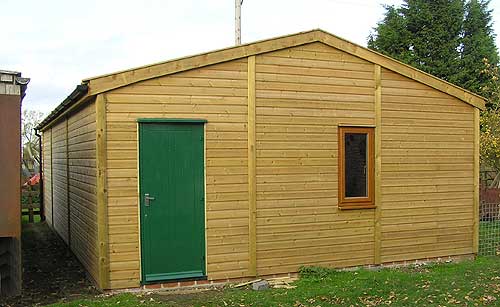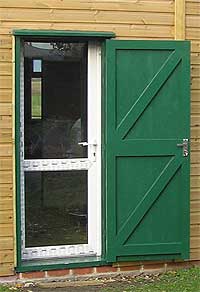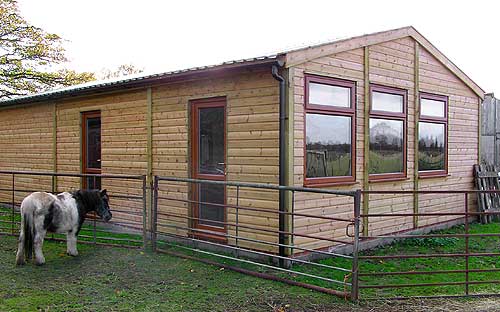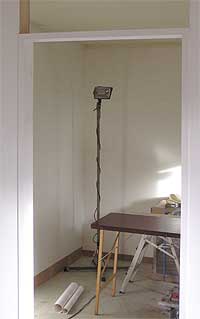By now you must be thinking “No progress? Has Mike grown tired of it already?” Well, no. George the builder completed the shell and interior room dividers while I was running workshops in Oregon, California and Colorado – but there still remains much to do.


My first job was to fit the exterior door frame and security door outside of the inset glazed storeroom door, and paint it green. That accomplished, the plywood interior skin, ceilings and walls needed preparation and papering. In the meantime, the white protective tape has been removed from the brown window frames, which are white only on the inside.
The ceilings are being papered with heavy-duty liner paper to be emulsion painted later. This is the first time I’ve papered a ceiling, and I’m quite pleased with the result – but you’d better keep out of hearing range if you see me wrestling with the manic paper! The walls of the storeroom will also be painted, but the office and studio walls will be papered because, hopefully, that should give no indication of the surface behind it – and it should give us a much better working environment.

The building itself, which currently has no form of heating, is proving to be well insulated – for both heat and sound. Even rain on the steel profile roof is only just audible.
At present I’m spending most afternoons working in the studio. In the evening, when required, I’m at DrawSpace.com, critiquing the work of artists attending my Novice correspondence course. And bringing my accounts up to date in between 🙂
Tomorrow, Sunday, I will have completed the papering of both the office and storeroom, completed the painting of the storeroom’s walls and maybe gloss painting the door frames.

I’m able to do this because I’ve run a temporary power lead into the building for a light – usually used in my workshop when I’m welding. So the next project will be the installation of the permanent wiring for lighting, followed by the wiring for the power sockets and heating.
I’m undecided about heating. We sited the LPG gas tank near the studio so we could link up to it for central heating, but now I’m favouring an HVAC system. This combines Heating, Ventilation and Air Conditioning with a dehumidifying bonus. Two units should be sufficient, and that’s why I’ve omitted the wall panel above the office door – to allow heat to flow to both rooms from one unit.
I know watching me do this is like watching paint dry – literally! – so expect a welcome break before I post the next update. 🙂


